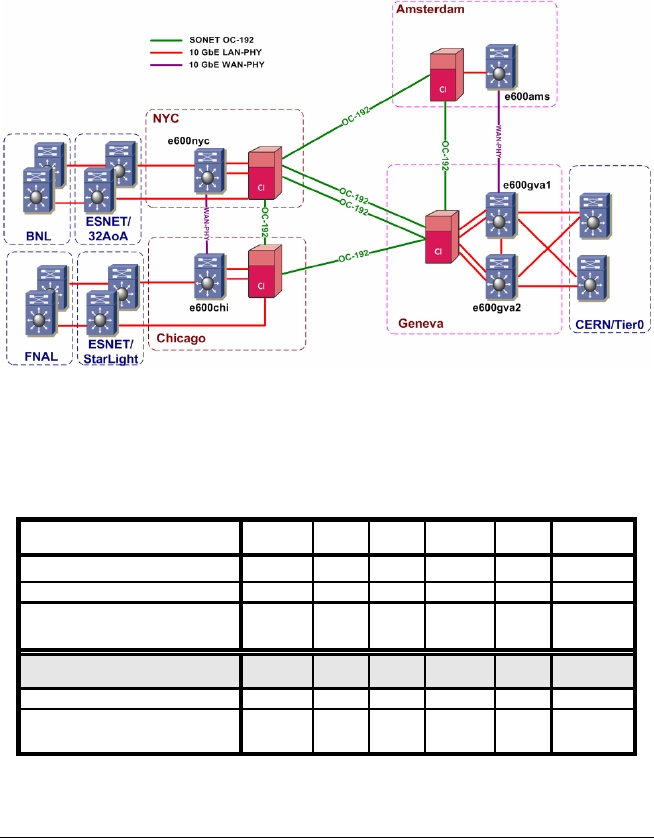and throughput capability. The planned topology for the LHC startup in July 2008 is shown in
Figure 13 : US LHCNet Planned Configuration for July 2008
US LHCNet's upgrade plans for 2008-2010 will continue to follow and meet requirements for
transatlantic connectivity for the LHC and other high-energy physics projects. Table 2 shows the
projected BNL and FNAL bandwidth requirements up to 2010 are shown here. Both the US
LHCNet and the ESnet development plans up to 2010 and onwards are consistent with this table.
Year
2005
2006
2007
2008
2009
2010
CERN-BNL (ATLAS)
0.5
5
15
20
30
40
CERN-FNAL (CMS)
7.5
15
20
20
30
40
Other (ESnet, Tier2, Inter-
2
10
10
10-15
20
20-30
Regional Traffic ......)
TOTAL US-CERN BW
10
30
45
50-55
80
100-110
US LHCNet Bandwidth
10
20
30
40
60
80
Other BW (GEANT,
Backup
10
10
10-20
20
20-30
Surfnet, IRNC, Gloriad...)
Table 2: Transatlantic Network Requirements Estimates and Bandwidth Provisioning Plan,
from the T0/T1 networking group, in Gbps
US LHCNet Redundancy and Resiliency:
The LHC network availability requirements are very strict: the target is 99.95% uptime, which
corresponds to less than an hour of unscheduled downtime per year. In designing the US LHCNet
network, great care was taken to meet and if possible exceed these requirements. Reliability was
one of the main concerns; this is why all US LHCNet equipment was purchased with redundant
36

